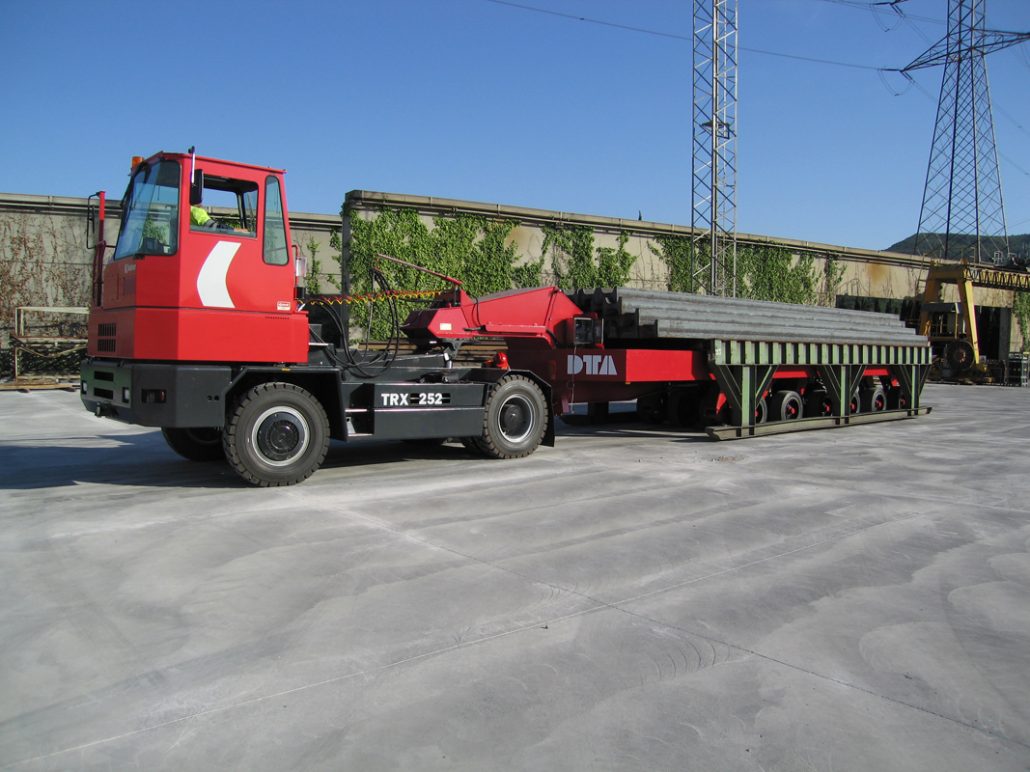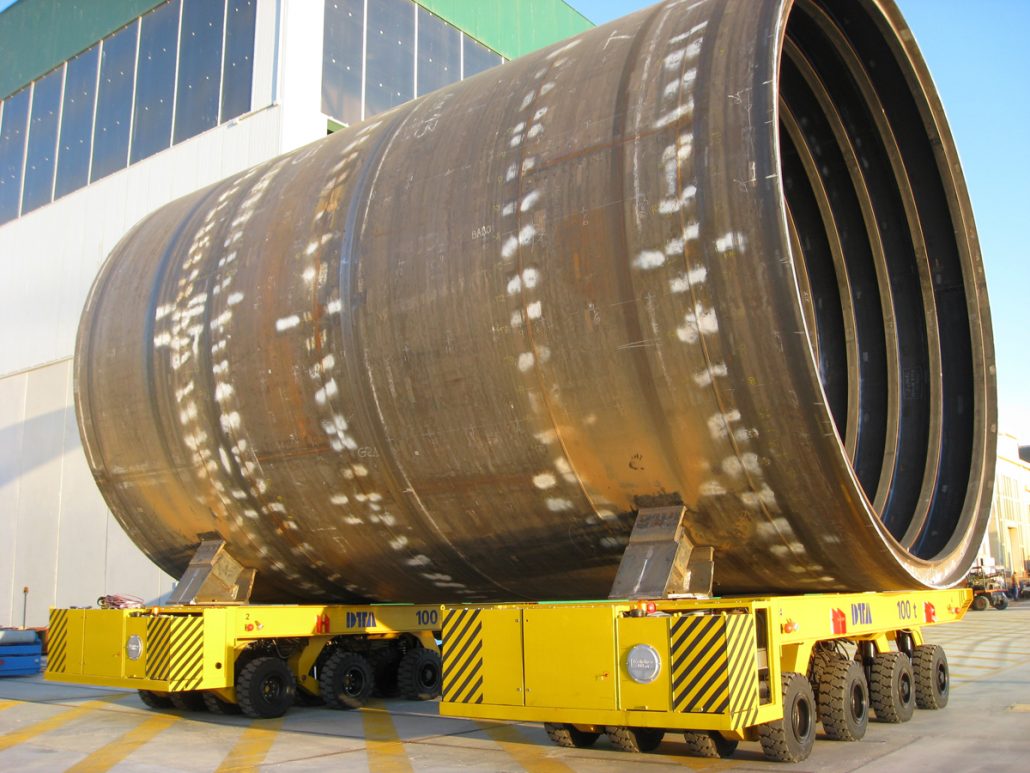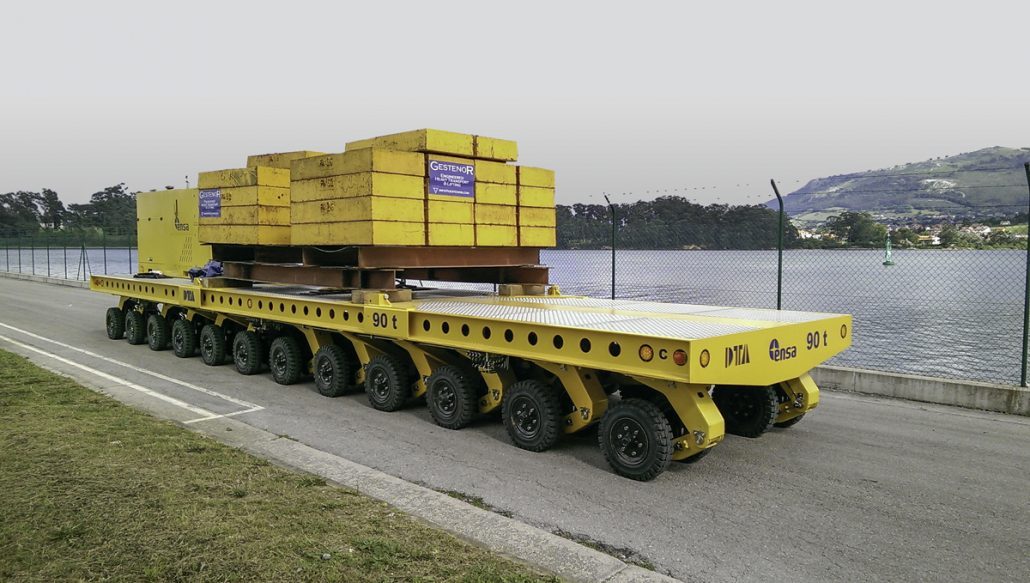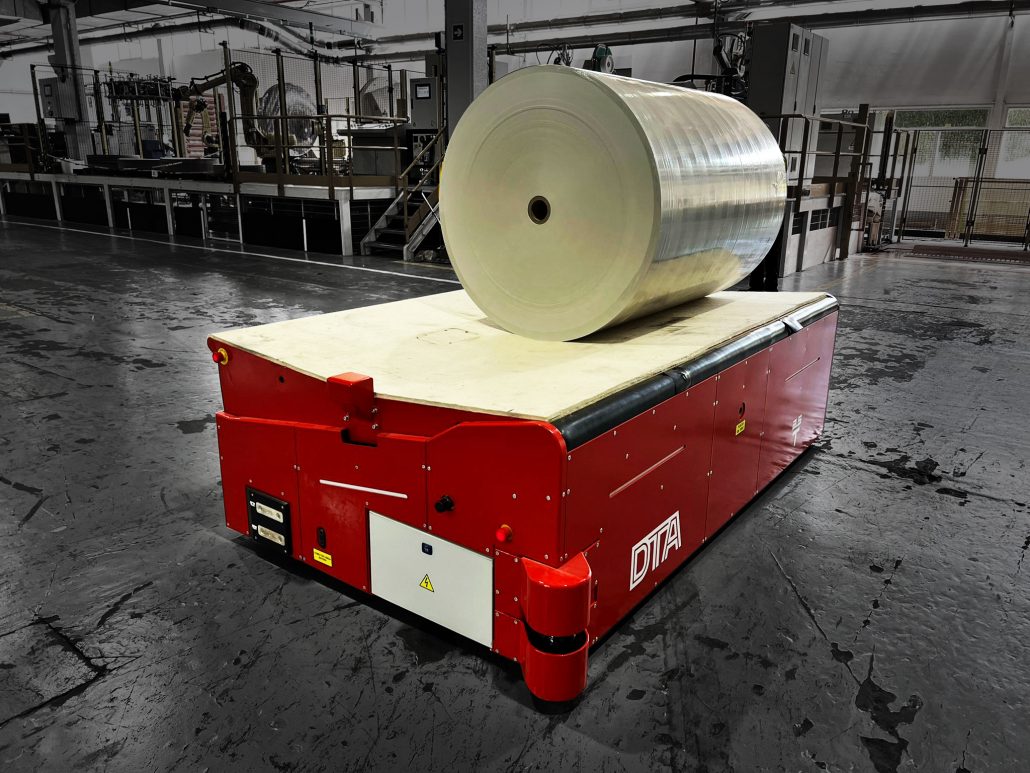Types of Automated Guided Vehicle
- Nandan GSE
- Blogs
Home » Types of Automated Guided Vehicle
Table of Contents
In today’s rapidly evolving business environment, companies are constantly on the lookout for innovative solutions to enhance efficiency and productivity. One of the most promising advancements in this realm is the utilization of Automated Guided Vehicle (AGVs). These versatile machines are reshaping material handling and logistics, offering a diverse range of applications across various industries. Whether it’s optimizing warehouse processes or enhancing manufacturing operations, AGVs come in various types, each tailored for specific tasks, ensuring precision and speed in execution.
Some commonly employed AGV types include Industrial Drawbar Trailers, Self-Propelled Modular Transporters, Heavy Duty Transporters, and unit load AGVs. Industrial Drawbar Trailers excel in effortlessly transporting heavy loads of up to 300 tons, while Self-Propelled Modular Transporters are ideal for customized heavy loading requirements. Unit load AGVs are versatile and capable of handling tasks like material loading and unloading.
Incorporating AGVs into company operations yields several benefits, including substantial labor cost reductions, error minimization, and overall operational enhancement. This article delves deeper into the world of AGVs, exploring their various types, advantages, and their potential to revolutionize business operations. Dive into the realm of Automated Guided Vehicles to discover how they can reshape and optimize your business processes.
Benefits of Using AGVs Operations
Automated Guided Vehicles offer numerous benefits to businesses looking to enhance their operational efficiency. Key advantages include:
- Reduced Labor Costs: AGVs significantly lower the need for manual labor in tasks such as transportation and handling of materials.
- Enhanced Precision and Accuracy: These vehicles operate with high accuracy, minimizing errors in material handling.
- Increased Productivity: AGVs operate continuously, leading to higher throughput and efficiency.
- Improved Safety: With AGVs, the risk of accidents and injuries associated with manual handling is greatly reduced.
- Scalability: Easily scalable, they can be integrated into existing operations with minimal disruption.
Types of Automated Guided Vehicle
Industrial Drawbar Trailer: AGV for Loads Up to 300 Tons
Industrial Drawbar Trailers are designed to handle extremely heavy loads, making them ideal for industries requiring the transportation of large-scale goods or materials.

Self-Propelled Modular Transporters: For Customized Heavy Loading
These AGVs are tailored for specific heavy load requirements, offering flexibility and efficiency in custom heavy loading scenarios.

Heavy Duty Transporters
- Electric Transporters (1 to 600 Tons Load Capacity): Suited for environmentally conscious operations, offering a cleaner alternative.
- Hybrid Transporters (20 to 50 Tons Load Capacity): Combining electricity and diesel, these offer versatility in various operational environments.
- Rail Cars (Up to 700 Tons Load Capacity): Ideal for transporting extremely heavy loads over long distances within industrial facilities.
- Diesel Transporters (Up to 800 Tons Load Capacity): These are suitable for the heaviest loads, providing robust power and durability.

Unit Load AGVs
Unit Load AGVs are versatile, handling a variety of tasks including loading and unloading, and are suitable for a wide range of industries.

Features and Capabilities of Automated Guided Vehicle
AGVs are equipped with advanced features that enhance their functionality:
- Navigation Systems: Utilizing laser, magnetic, or optical guidance systems for precise movement.
- Load Handling: Equipped with mechanisms like forks, conveyors, or platforms to handle different types of loads.
- Safety Features: Including sensors and emergency stop buttons to ensure safe operation.
- Integration with Warehouse Management Systems: Facilitating seamless operation within existing workflows.
Applications and Industries that Can Benefit from AGVs
Automated Guided Vehicles, have found wide-ranging applications in various sectors, transforming the way businesses operate. Here’s a breakdown of their key roles in different industries:
Manufacturing: AGVs are pivotal in manufacturing, where they excel at transporting raw materials, components, and finished products. They optimize production processes by ensuring the seamless flow of materials along assembly lines, reducing downtime, and enhancing overall speed. AGVs handle repetitive tasks with precision, freeing up human workers for more complex and value-added activities.
Warehousing and Distribution: In warehousing and distribution, AGVs streamline the movement and storage of goods. They play a crucial role in efficient product retrieval, ensuring items are quickly and accurately picked from shelves and transported to their designated locations.
Healthcare: AGVs are vital for the efficient movement of supplies, medications, and equipment within hospitals. They enhance the delivery of medical supplies to different departments, ensuring timely availability while contributing to infection control by reducing human handling of materials.
Retail: They can handle tasks like restocking shelves, moving inventory, and assisting in inventory management. By streamlining the supply chain, AGVs ensure products are readily available for customers, leading to a seamless shopping experience.
Factors to Consider When Choosing AGVs for Your Operations
Choosing the right Automated Guided Vehicle (AGV) for your operations is a crucial decision that can significantly impact your business efficiency. To make an informed choice, it’s essential to consider several key factors:
- Load Capacity: Start by evaluating the AGV’s load capacity. Assess your operational needs and the typical load sizes and weights in your environment. Choosing an AGV with the appropriate load capacity ensures it can handle materials and products effectively without overloading or underutilizing its capabilities.
- Environment: Take into account the working conditions where the AGV will operate. Consider factors like floor conditions, temperature variations, and exposure to dust, moisture, or hazardous substances.
- Integration: AGVs should seamlessly integrate with your existing systems and processes. Evaluate their compatibility with warehouse management systems (WMS), manufacturing processes, and other automation equipment.
- Cost: Balance the cost of AGV implementation against the expected return on investment (ROI). While meeting operational needs is essential, assess the financial implications. Consider initial investment, ongoing maintenance costs, and potential savings and efficiency gains.
By meticulously considering these factors, you can confidently select the AGV that best suits your operations, contributing to overall success and efficiency within your organization.